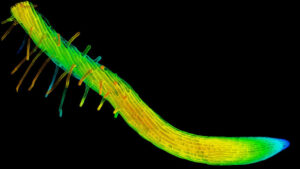
A new study has revealed a significant link between prolonged sitting hours and increased breast cancer risk among obese women who are physically inactive. The research, published in the journal BMC Women’s Health, highlights the potential of daily movement as a preventive measure against breast cancer.
The study, titled “Association between daily sitting time and breast cancer among obese women: a nationwide population-based study,” underscores the importance of physical activity in reducing health risks associated with sedentary behavior. It was conducted by researchers at the Meizhou People’s Hospital in China and analyzed data from the National Health and Nutrition Examination Survey (NHANES).
Understanding the Risks
Obese and physically inactive women who spend long periods sitting have a significantly higher prevalence of breast cancer, according to the study. However, this association was not observed in obese women who maintained regular physical activity. The findings are particularly concerning for post-menopausal women, who face the sharpest increase in risk from extended sitting periods. This is a critical discovery, as over 40% of breast cancer patients are diagnosed after the age of 65.
Obesity, defined by the World Health Organization (WHO) as having a body mass index (BMI) above 30 kg/m², is a chronic condition resulting from excessive fat accumulation. It is associated with numerous health complications, including certain cancers, and affects over 600 million people globally, with a higher prevalence in women.
Sedentary Lifestyle and Health Implications
Sedentary behavior, characterized by activities with energy expenditure below 1.5 metabolic equivalents, is a modifiable risk factor for several health issues, including cardiovascular diseases and metabolic disorders. Prolonged sitting has been linked to increased breast cancer prevalence in the general female population, but evidence specifically connecting it to high-risk groups like obese women has been limited until now.
The study aimed to fill this gap by examining the relationship between daily sitting time and breast cancer prevalence in obese women, while also assessing the mitigating role of physical activity.
Key Findings from the Study
The researchers analyzed data from 9706 obese women, categorizing them based on their daily sitting durations: less than four hours, four to six hours, six to eight hours, and more than eight hours. The study identified 271 breast cancer cases among these participants.
“Among physically inactive obese women, the fully adjusted odds ratios (ORs) for breast cancer were 2.56 (95% CI: 1.53–5.86) for 4–6 hours, 2.12 (1.40–4.80) for 6–8 hours, and 2.43 (1.37–5.84) for more than 8 hours, compared to those sitting less than 4 hours per day.”
This data illustrates a nonlinear dose-response relationship, where increased sitting time correlates with higher breast cancer prevalence. Notably, no significant increase was observed in physically active obese women, regardless of their sitting duration.
Subgroup Analysis
The risk was notably pronounced in subgroups such as women aged 60 years or above, non-Hispanic whites, those with higher educational backgrounds, post-menopausal women, and individuals with higher obesity levels (BMI ≥35 kg/m²). Women facing financial hardship also experienced dramatic increases in risk, emphasizing a socioeconomic vulnerability.
The Role of Physical Activity
The study highlights the protective effect of regular physical activity, which can completely mitigate the risks associated with prolonged sitting. Engaging in moderate activities, such as brisk walking for at least 10 continuous minutes per week, was sufficient to define someone as physically active and offer protection against breast cancer.
Physical activity provides numerous physiological benefits, including the reduction of visceral adipose tissue, regulation of hormonal levels, reduction of inflammation, and improvement of insulin sensitivity. These benefits collectively contribute to reducing breast cancer risk and improving prognosis.
Implications and Future Directions
The findings suggest that promoting physical activity could be a promising intervention to reduce breast cancer prevalence in obese women, particularly among older and post-menopausal populations. Reducing sitting time to less than four hours per day and encouraging physical activity could counteract metabolic and hormonal imbalances.
However, the study’s cross-sectional design means it cannot establish direct causal relationships between sitting time and breast cancer prevalence. Future longitudinal studies are needed to determine whether prolonged sitting precedes breast cancer diagnosis or reflects post-diagnosis behavioral changes. Additionally, the reliance on self-reported breast cancer diagnoses may introduce bias, necessitating further research to validate these findings.
Overall, the study reinforces the importance of physical activity as a preventive measure against breast cancer, especially for high-risk groups, and calls for public health initiatives to address sedentary lifestyles.






